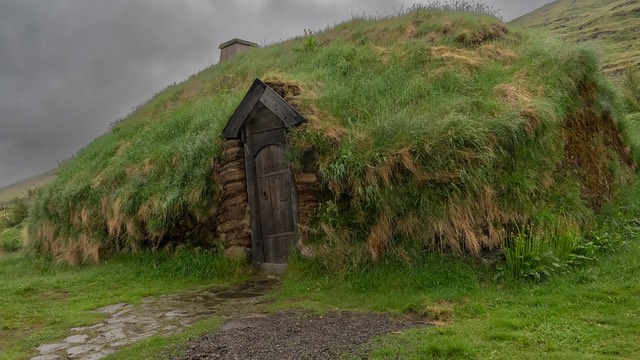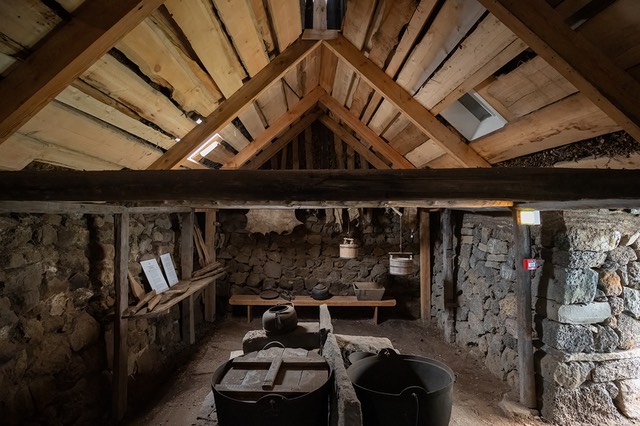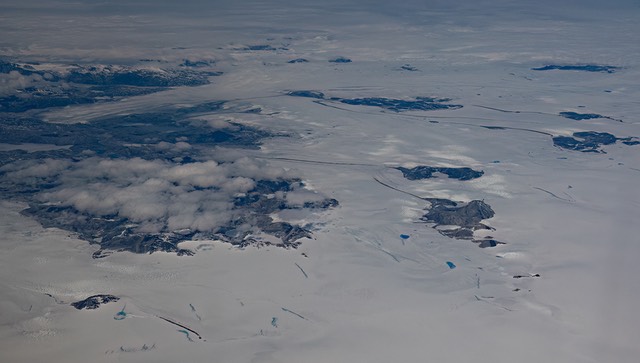= = = = = = = = = = = = = = = =
Nikon Z Camera Owners: Up-to-date information and new articles by Thom Hogan are available at zsystemuser.com, which continues to follow all Nikon mirrorless camera news and information in 2026 and the future.
= = = = = = = = = = = = = = = =

What is It?
The 12-28mm f/3.5-5.6 PZ VR DX lens is a powered wide angle zoom that lines us most closely with the Z30 vlogging user. That’s not to say that lens isn’t usable with the Z50 or Zfc, it’s just that all the features and performance lines up best with the video creator. Still photographers would probably like a bit more at the wide end, and probably don’t want a power zoom ring, though Nikon has taken big steps to make the power aspect quite livable for still use.
But let’s back up a bit and go through all the basic specifications of the lens and what they mean.
12mm at the wide end on DX is the same as 18mm for FX (full frame). 28mm DX is the same angle of view as 42mm for FX (full frame). You’ll immediately note that we don’t have an 18-42mm lens for FX (the closest we come is the 14-30mm or 24-50mm). I believe Nikon picked this focal range specifically for Z30 vloggers. At 12mm you get a near perfect head-and-shoulders view while holding a Z30 in front of you, while at 28mm you get the 60 Minutes tight face frame (cropped below mouth, above eyes).
Zoom is handled through a very smooth, wide ring on the front of the lens. Zoom can be done at any of 11 speeds, plus you can program the ML-L7 Bluetooth remote or MC-N10 grip to do the zooming, as well. Zooming is impressively steady and well controlled, with no hard, objectionable stop at either end.
The angle of view ranges from 53° to 99° diagonally. The zoom is done entirely internally in the lens, so the barrel length stays fixed as you zoom.
Minimum focus distance is 7.5” (0.19m), which is less than a full arm extension away (it’s actually difficult to hold the camera pointed at yourself that close). Another way of looking at things is that a 9” wide (.23m) fits across the frame at minimum focus distance at the wide end. The maximum magnification works out to be just about 1:5, which isn’t near macro level, but is still respectable. Focus is performed with the usual stepper motor, and also done internally. There’s a very minor amount of focus breathing at the telephoto end, but this becomes unnoticeable at the wide end.
You’ll have noted that the maximum aperture is f/3.5-5.6, and not up to f/6.3 as many variable aperture Z Nikkors. At the other end, apertures only range to f/16 at 12mm, and f/25 at 28mm, so you need to pay attention to exposure a bit more with this lens attached in bright conditions, as you can get into a situation (high ISO, maxed out shutter speed) where you’re overexposing. I found that to be particularly true of electronic shutter at 12mm.
The max aperture sequence is approximately:
- 12mm — f/3.5
- 13mm — f/3.8
- 14mm — f/4
- 16mm — f/4.2
- 17.5mm — f/4.5
- 19mm — f/4.8
- 21mm — f/5
- 23.5mm — f/5.3
- 26.5mm — f/5.6
In other words, you lose a little maximum aperture throughout the zoom range.
The lens has seven rounded diaphragm blades in the aperture opening. Lens construction is 12 elements in 11 groups, with surprisingly only one aspherical and one ED lens element. Generally, you see more “correction” elements in wide angle zooms than this.
Image stabilization (lens VR) is included with this lens, with a CIPA rating of 4.5 stops. Up front you have a 67mm filter thread size.
Note that some cameras (e.g. Z50) may need a firmware update before you can use all the features of this lens.
The lens has multiple seals to help with water and dust resistance. Lens build is the usual plastic bayonet at the back of the lens, and the result is a 7.2 ounce (205g) weight, which is very appropriate for the current Z DX bodies. The lens only sticks out 2.5” (63.5mm) from the camera body, which keeps the center of gravity close to the body. The Z30 and 12-28mm are thus very gimbal friendly, both in size and weight; you don’t need a heavyweight gimbal for this combo.
Nikon makes the 12-28mm f/3.5-5.6 PZ VR DX lens in Thailand, and it has a list price of US$360. Note that you don’t get the HB-112 lens hood with the lens; it’s an optional extra.
Source of reviewed lens: purchased
How’s it Handle?
I was prepared to be bothered by this lens, as most powered zooms overshoot, are difficult to get to a particular focal length, and often have other issues, such as extending on zoom.
Not so the 12-28mm f/3.5-5.6 PZ VR DX. Even just using the defaults on the zoom ring I felt I was comfortably in charge of what the lens was doing, and you can see the focal length achieved in the viewfinder (or rear screen). You’ll want to turn Save focus position and Save zoom position (PZ lenses) both to On. You’re also going to want to look at Custom Setting #F7 (Z30) and make sure that you’ve got those settings dialed into what you want to use if you use the ML-L7 Bluetooth remote to control the zoom. Note that using the zoom buttons on the back of the camera only works for Stills.
My only real issue with the lens is that it can’t be locked. Because both the zoom and focus rings are so easily moved, it’s possible to move a dial when you really just want things to stay where they are.
How’s it Perform?
For this review, I decided to take the lens to Iceland and use it pretty much as Nikon intended, doing a bit of vlogging as well as quick still work with the Z30.

Focus: As you’d expect from a wide angle zoom, plenty fast. It also appears to be accurate, too. What you probably don’t expect is that the lens really didn’t have any tendency to hunt, even though I tried to provoke it to do so. That’s a testament to both the Z30 autofocus system as well as the fact that focus internally in the 12-28mm doesn’t really have to move much glass very far.
Sharpness: Curiously, this lens has one of the “flatter” MTF test results I’ve seen. By that I mean that the lens in testing was pretty much the same level of sharpness from maximum aperture through to the point where diffraction really starts to take away acuity, and that was true of every focal length, and true of the corners as well as the centers. At 12mm, there’s a very small benefit to stopping down to f/5.6, but that slight bump is even smaller at the longer focal lengths. There might be a bit of field curvature at 12mm, and there’s a more clear spherical aberration as you near the corners.
The center wide open is excellent at all focal lengths except 28mm, where it falls to very good. The corners are good+ at 12mm-20mm, and very good at 28mm.
Overall, the results are actually better than expected for a lower cost wide angle zoom. I’m very happy with the image quality on the current DX cameras.

The entire width of lens was useful in interior scenes, and the in-camera corrections worked quite well. What was a little surprising is how well the lens rendered detail, even at ISO 6400, as it was set here. The following is the back wall detail (and this is at f/3.5, where the focus plane was somewhat forward of this area.

Another example:


Here, the largest text is almost readable, despite the fact that we’re at ISO 6400 and noise reduction is turned on.
Chromatic Aberration: lateral CA is generally well corrected and less than a half pixel width. The edges do show the lateral CA just a bit more than the central region. Longitudinal CA is present, but really only visible on extreme contrast edges or if you closely examine the bokeh (different color edge on out of focus highlights in front of focus than behind).

Welcome to Greenland (note some missing glacier). CA is well corrected on this scene with bright/dark edges.
Vignetting: Probably the worst trait of the lens at 12mm, where you’ll find about two stops of corner vignetting, and even stopping down won’t bring this into tolerable range. The lens is better in the mid focal ranges, and best at 28mm, were vignetting is actually mostly ignorable, particularly without the corrections applied.
Linear Distortion: When corrected, there’s virtually no distortion to talk about. If you pixel peep, you can see a teeny bit of barrel at 12mm and a teeny bit of pin cushion at 28mm, with 20mm being the crossover point between the two.
Bokeh: I’m hesitant to describe this, as this is not a fast lens, and it’s note likely you’re using it to try to pull subjects off backgrounds. That said, my initial impressions are good, with only a moderate bit of busy-ness to the blur circles, and also less cats eye than I’m used to seeing.

It’s stretching it to try to show forward/back out of focus with this lens, but this museum exhibit gave me a chance to hint at it, as I was quite close and the exhibit itself used a lot of depth (nice job; I wish more museums would think better about depth). In some wide angle lenses the transition to out of focus blur can be jarring. I didn’t find that the case with this lens.
Final Words
A lot of us were saying “what is Nikon thinking?” when they announced this lens. Heck, we were saying that when it first appeared on the Road Map and before we knew it was a power zoom.
Nikon was clearly targeting those creator types every camera company covets these days. For vlogging, this lens absolutely hits the mark. Right focal length, right size, right pretty much everything for pointing it at you on a Z30 (or Zfc). What I was a little surprised to find is that the lens just didn’t get in my way for still photography. Sure, I’d have liked 10mm instead of 12mm for stills, but walking around Iceland with this lens on my Z30 I generally was quite pleased at what I could do, and the fact that the lens just didn’t get in my way. Moreover, the image quality it produced was perhaps not equivalent to full frame's top of the line, but on the 20mp DX image sensors I found it to be all I needed. Even wide open.
The interesting thing is the new DX travel sets this lens opens up. In particular, 12-28mm and 18-140mm, or 12-28mm and 24-200mm. I’ve adjusted my Rational Z DX Lens Kits article to reflect this. I just wish we had a bit better body than the Z50 to use those on. A bit more D7500 than D5600.
Recommended (2023 to present)